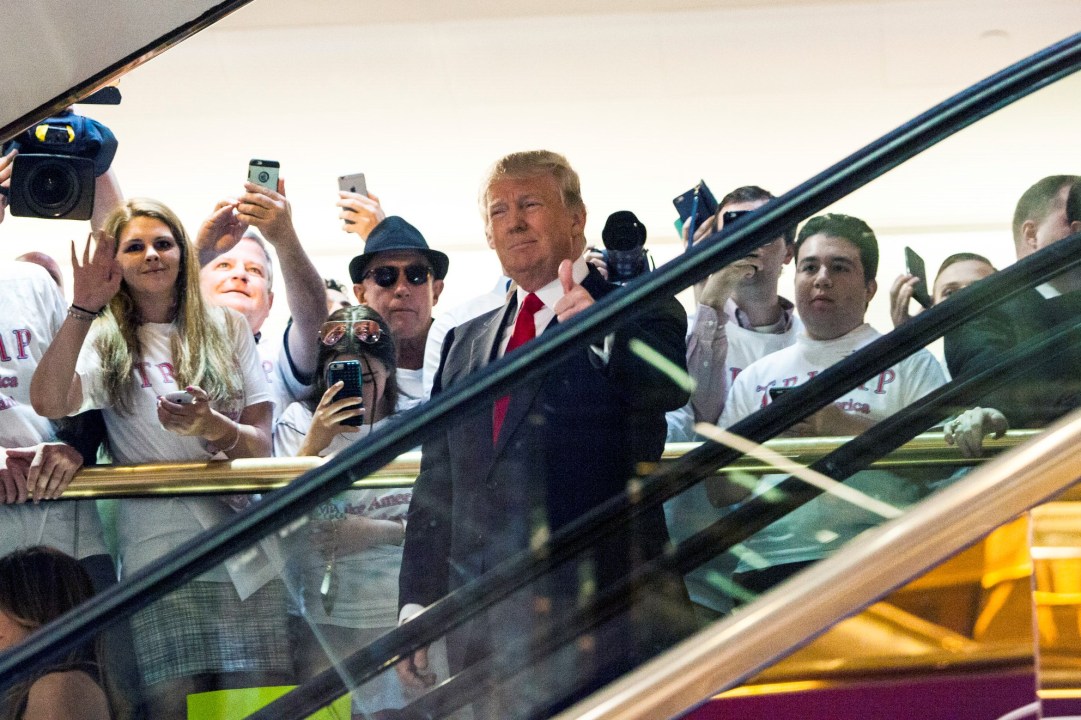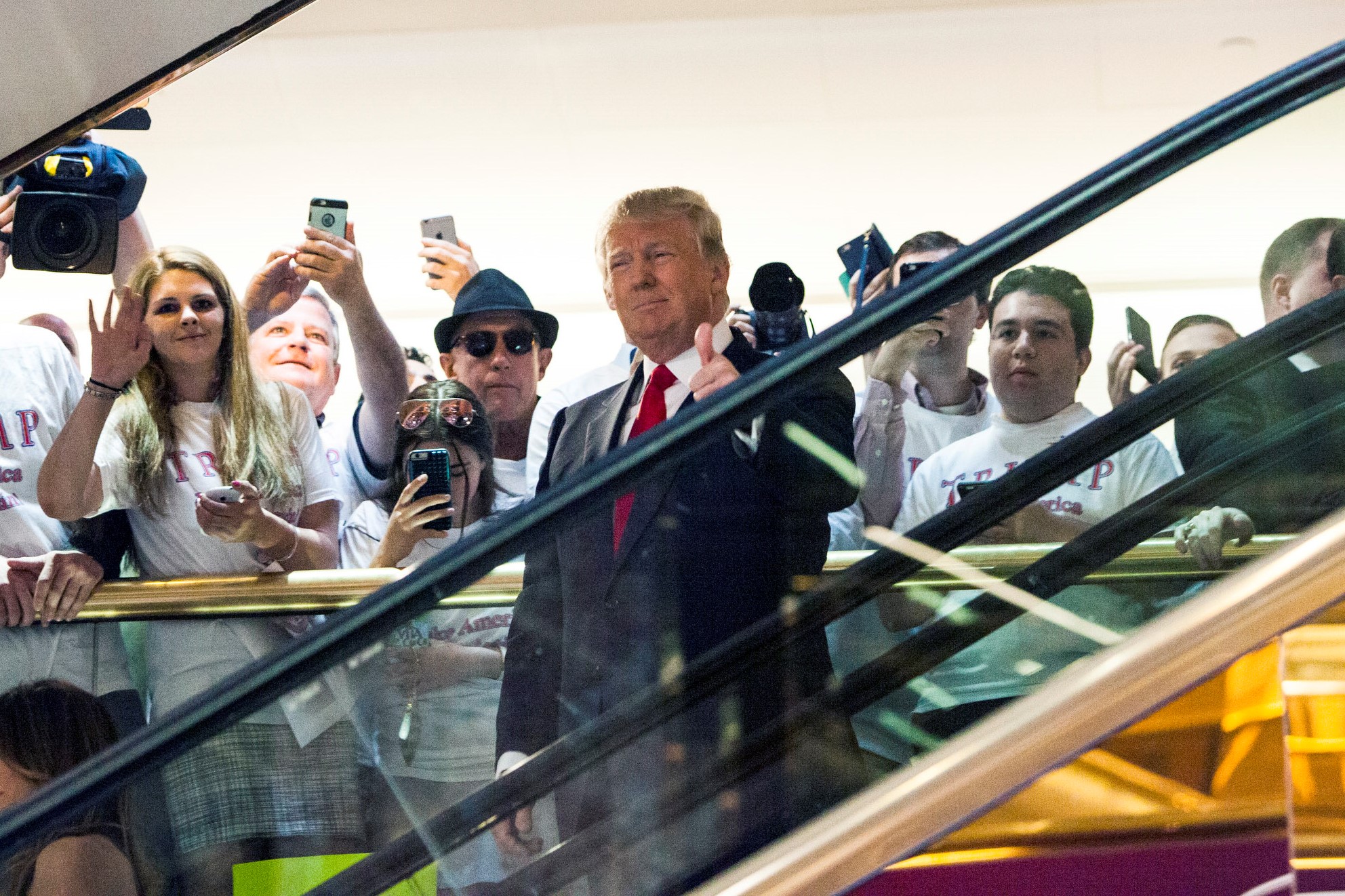Him again? Donald Trump’s back in the White House. Those who thought his first term in office was an aberration – a dismaying blip in the long arc of history towards liberal democracy, properly corrected by Biden’s 2020 victory – have been proven wrong in the most painful possible way. He wasn’t some brainfart of the internet era, some moment of madness. He’s back, and all the evidence seems to suggest that what he represents is much more in tune with the global zeitgeist than what Kamala Harris or, for that matter, Keir Starmer, are selling.
Trump once made a performance of fighting the deep state. Today he wants to install a new one.
But there has, I think, been what the young people like to call a ‘vibe shift’. Trump remains all the things that his detractors hate and fear and his cheerleaders love – which is to say, materialistic, selfish, transactional, unpredictable and profoundly uninterested in the moral and legal norms of government. Those aspects of his character are, so to speak, baked in. He’s highly unlikely at this stage to wake up in his bed with a deep respect for the principle of public service or the separation of powers. But the outlets that those character traits are finding seem to me to be different this time round.
The Trump who came to power in 2016 was a creature in only some respects of the digital age – social media was where he campaigned, and its love of drama gave him his reach. But the substance of his appeal was very analogue. He came to power promising blue-collar jobs, deploring the ‘American carnage’ which (among other things) the global era had wrought on the manufacturing industries. The ‘basket of deplorables’ who voted for him occasioned any number of dismayed but sympathetic long-reads in the New York Times about the rust belt and the opioid crisis and flyover states and ‘left-behinds’.
Bernie Sanders of all people, in a Twitter post yesterday, acknowledged that aspect of what we might call proto-Trump. ‘Donald Trump campaigned in 2024 as an anti-establishment populist prepared to take on the political class and act on behalf of working families,’ he said. ‘When Trump is prepared to move forward in that direction, I will gladly support him. When he does not, I will vigorously oppose him.’ Obviously, this tweet went down super badly with Bernie supporters; and obviously it was objectively hilarious, with its echo of the Skibbereen Eagle warning that it was keeping a watchful eye on the Tsar. But the first sentence is true.
Best guesses will vary as to how much of a stuff Trump ever really gave about ordinary working Americans or the dignity of manual labour. But he pretended to. His appeal, first time round, was retro in just the same way Bernie Sanders’s was. He may have had a tailwind of very online alt-right types, but his public positioning was more George Wallace than Pepe the Frog. Deutero-Trump is a very different kettle of eels. He was an analogue populist-nationalist who rode to power by digital means; now he’s a full-throated cheerleader for the transnational digital oligarchy.
One token of that is his screeching U-turn on the question of banning TikTok. It was Trump, after all, who first campaigned against TikTok as a potential agent of influence for the Chinese government. This was during his ‘America First’ phase, when anything that came from the East was the enemy. Banning TikTok was his idea. Now he’s saying he wants it saved, suggesting a ‘joint venture between the current owners and/or new owners whereby the US gets a 50 per cent ownership in a joint venture set up between the US and whichever purchase [sic] we so choose.’ I wonder if he knows any potential ‘purchase’ with deep pockets and an interest in social media who might be interested in taking a lucrative stake.
The second great token of the vibe shift is that Trump is now all-in on crypto – to the extent that he has launched this $TRUMP meme coin which has magicked a multi-billion-dollar market cap, ex nihilo, overnight – with 80 per cent of the coins belonging to companies he owns. One toothsome detail is that the value (I use the term cautiously) of this crypto property created in the last day or so now constitutes about 90 per cent of his personal net worth.
These developments lend credence to the humiliating idea that Trump is now a wholly owned subsidiary of Elon Musk. But they also indicate that that’s where the money and the power is: real estate may have been where it was at in New York in the 1980s, but it’s not where it’s at now. The so-called ‘great capitulation’, in which within weeks of his election victory Silicon Valley’s richest and most powerful scrambled to suck up to Trump and Musk, is also a great alignment of interests.
Proto-Trump, in some respects, cut across the grain of the interests of the tech moguls (and international political interests) which helped bring him to power. America First nationalism and sabre-rattling over tariffs are at best irrelevant, and at worst active impediments, to the Silicon Valley oligarchy and its international enablers and beneficiaries. There was a friction there. That friction has gone. Proto-Trump made a big performance of fighting the deep state. Deutero-Trump makes no secret of wanting to install a new one.









Comments